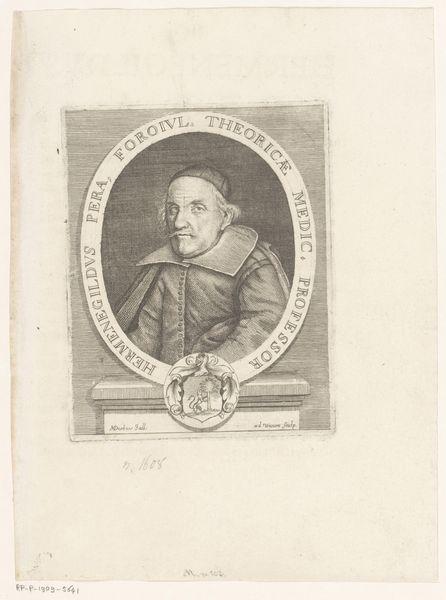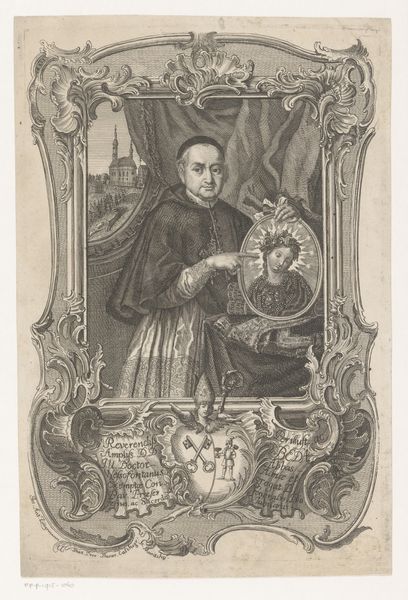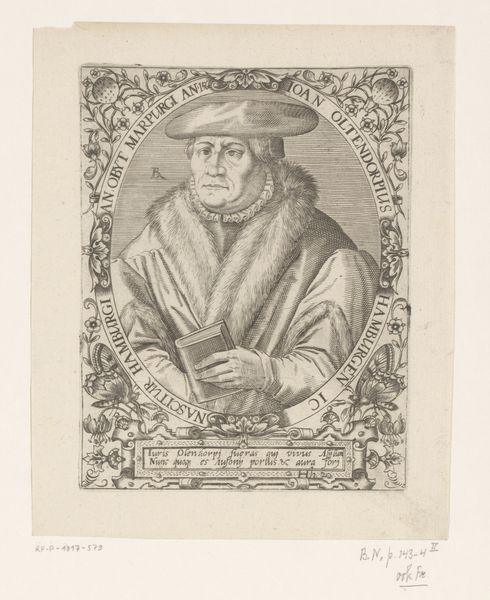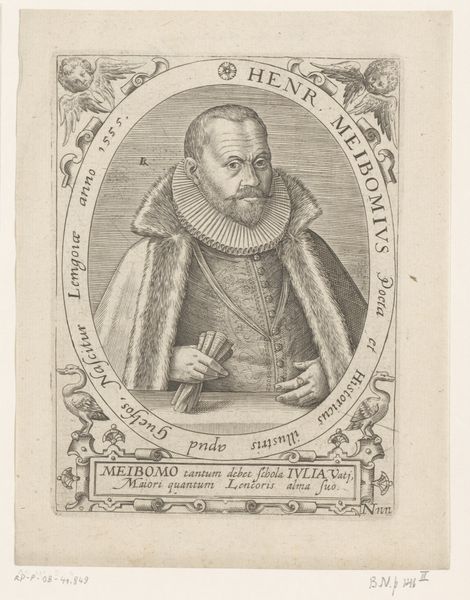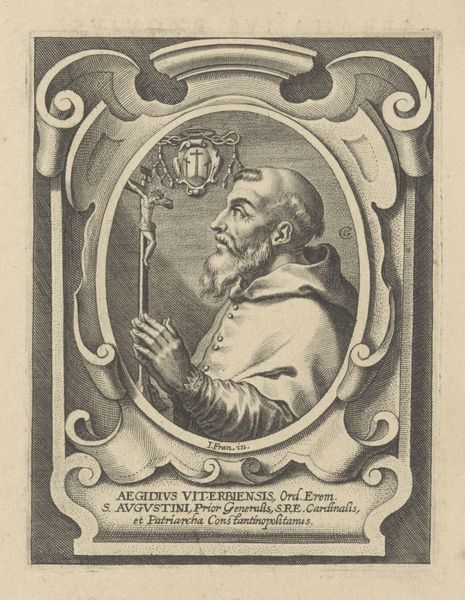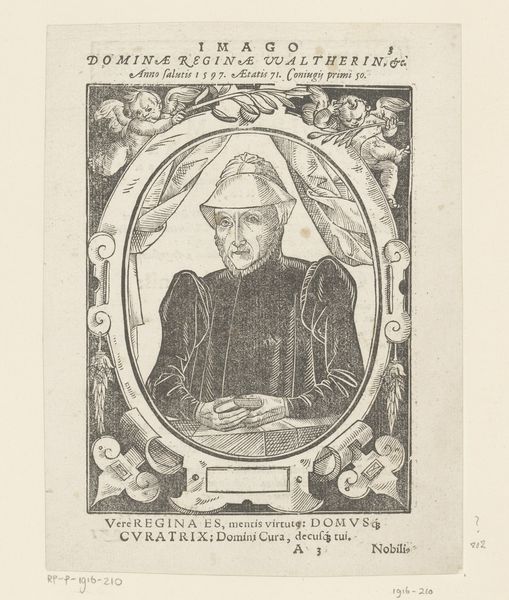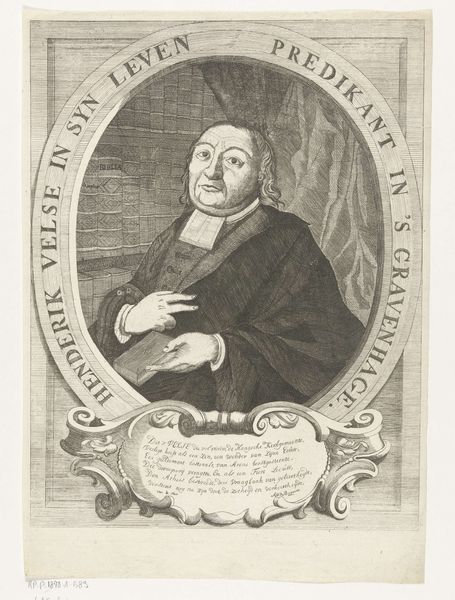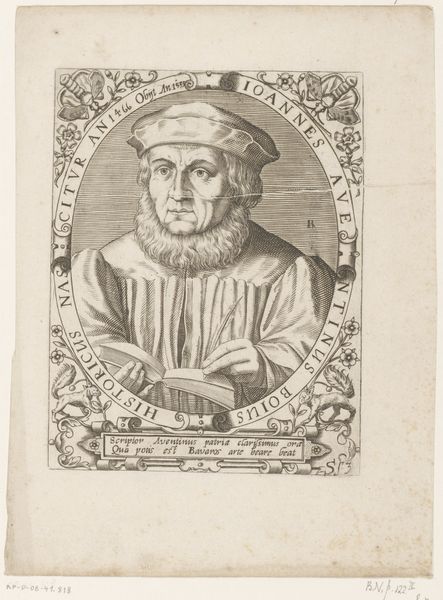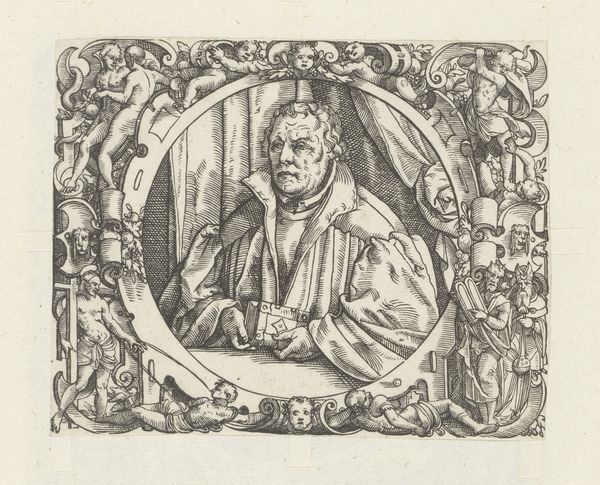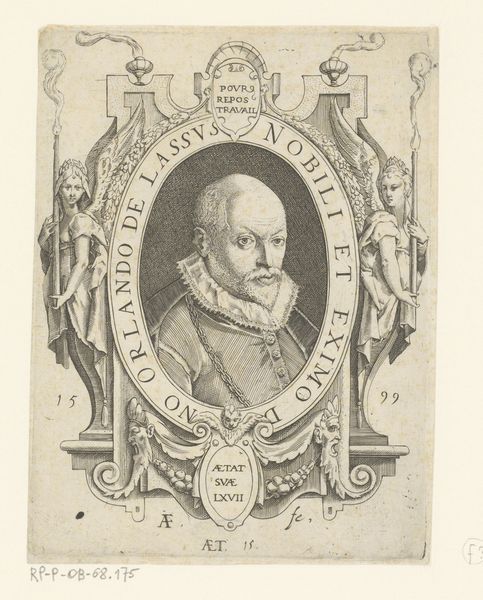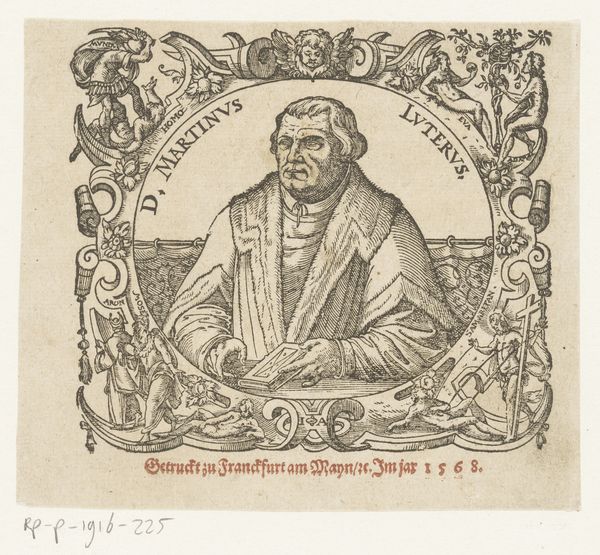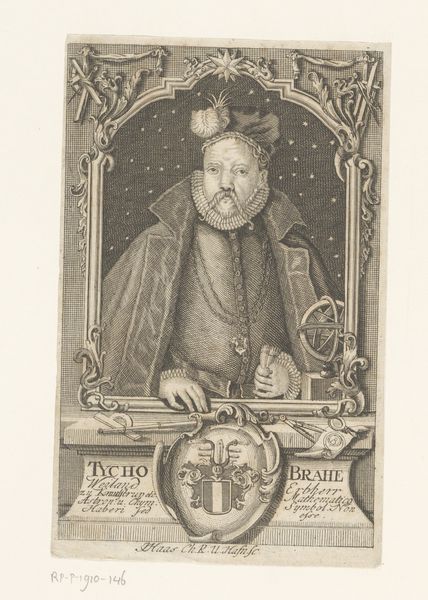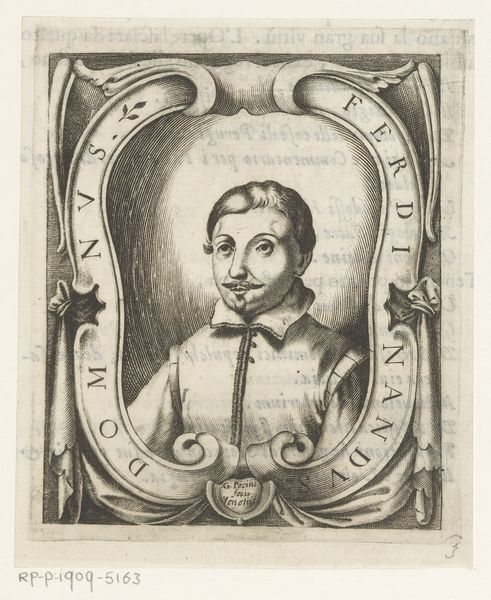
Portret van Matthäus Ferdinand Sobek von Bilenberg op 50-jarige leeftijd 1668
0:00
0:00
print, engraving
#
portrait
#
baroque
# print
#
engraving
Dimensions: height 248 mm, width 172 mm
Copyright: Rijks Museum: Open Domain
Editor: We are looking at a print from 1668, titled "Portret van Matthäus Ferdinand Sobek von Bilenberg op 50-jarige leeftijd", which translates to "Portrait of Matthäus Ferdinand Sobek von Bilenberg at the age of 50." It’s an engraving by Joseph Calasanz Dooms. The Baroque styling definitely lends it a stately air. It is enclosed within an elaborate, oval frame; what sense do you make of this print? Curator: It's more than just stately; it is constructed with political implications. Consider how the Baroque style itself functioned as propaganda. The Counter-Reformation used the grandiose and ornate to overwhelm viewers, reinforcing the Church's power. And here, that power is doubly conveyed by the trappings of wealth, status, and religious importance! Editor: So, you see this elaborate presentation more as a statement of power than, say, an aesthetic choice? Curator: The two aren’t mutually exclusive! Baroque *is* the aesthetic choice, *to* make a statement of power. Notice the Latin inscription encircling the portrait, advertising his roles as Counselor and Archbishop. And above, the coat of arms, literally framing him within nobility. Everything conspires to legitimize and promote his authority, creating a specific public image. Who commissioned it, do you think, and what purpose did this printed portrait serve in the public sphere? Was this printed portrait intended for private devotion, or something more public? Editor: I imagine something more public, a statement of status intended for display. But that overt promotion feels almost… vulnerable, as if protesting too much? Curator: Exactly! It points to a world where authority was constantly negotiated, represented, and reaffirmed through public imagery. And, now, how that artwork acts within today's institutions in comparison to 17th century institutions. Food for thought! Editor: That adds another layer to it. Seeing this portrait as a carefully constructed argument is really enlightening. Thank you!
Comments
No comments
Be the first to comment and join the conversation on the ultimate creative platform.

